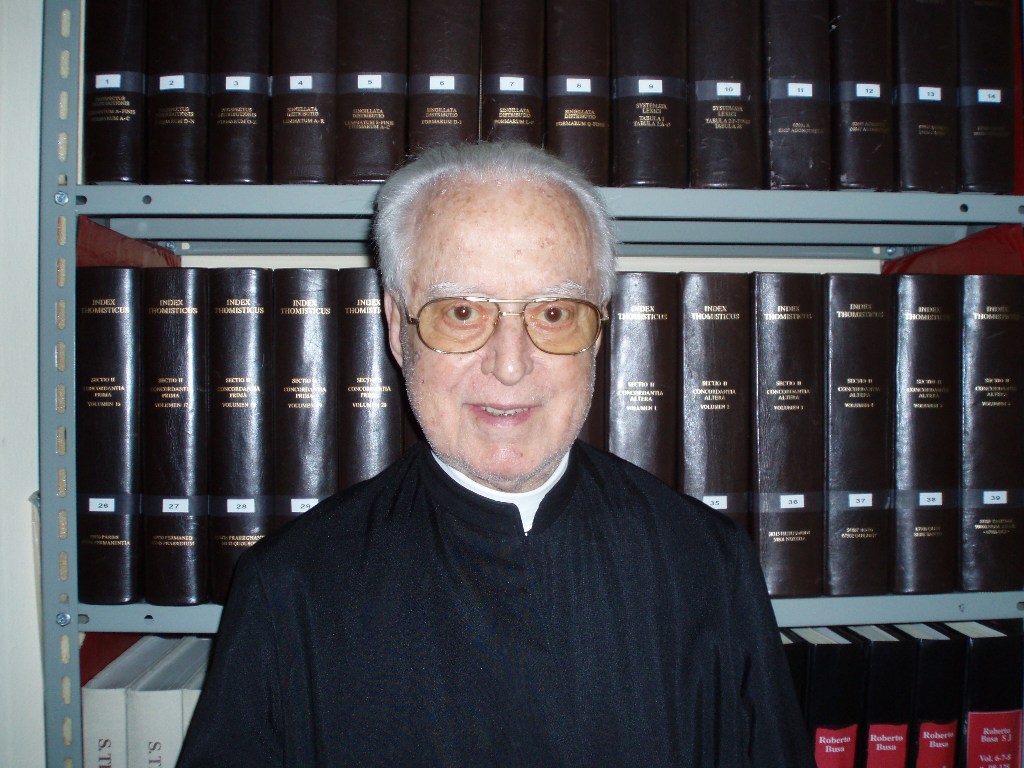Index Thomisticus on:
[Wikipedia]
[Google]
[Amazon]
 The ''Index Thomisticus'' was a
The ''Index Thomisticus'' was a
 The ''Index Thomisticus'' was a
The ''Index Thomisticus'' was a digital humanities
Digital humanities (DH) is an area of scholarly activity at the intersection of computing or Information technology, digital technologies and the disciplines of the humanities. It includes the systematic use of digital resources in the humanitie ...
project begun in the 1940s that created a concordance
Concordance may refer to:
* Agreement (linguistics), a form of cross-reference between different parts of a sentence or phrase
* Bible concordance, an alphabetical listing of terms in the Bible
* Concordant coastline, in geology, where beds, or la ...
to 179 texts centering around Thomas Aquinas
Thomas Aquinas, OP (; it, Tommaso d'Aquino, lit=Thomas of Aquino; 1225 – 7 March 1274) was an Italian Dominican friar and priest who was an influential philosopher, theologian and jurist in the tradition of scholasticism; he is known wi ...
. Led by Roberto Busa
Roberto Busa (November 28, 1913 – August 9, 2011) was an Italian Jesuit priest and one of the pioneers in the usage of computers for linguistic and literary analysis. He was the author of the ''Index Thomisticus'', a complete lemmatization of t ...
, the project indexed 10,631,980 words over the course of 34 years, initially onto punched card
A punched card (also punch card or punched-card) is a piece of stiff paper that holds digital data represented by the presence or absence of holes in predefined positions. Punched cards were once common in data processing applications or to di ...
s. It is considered a pioneering project in the field of digital humanities.
Project
Busa began the project in 1946. IBM agreed in 1949 to sponsor the project until its completion. They assigned Paul Tasman, an executive at the company, to work with Busa. Busa selected 179 texts centering aroundThomas Aquinas
Thomas Aquinas, OP (; it, Tommaso d'Aquino, lit=Thomas of Aquino; 1225 – 7 March 1274) was an Italian Dominican friar and priest who was an influential philosopher, theologian and jurist in the tradition of scholasticism; he is known wi ...
that would be put into a form that was machine-readable. 118 of the works were written by Aquinas, and the remaining 61 items were either at one point mis-attributed to him or an attempt to complete an unfinished work begun by Aquinas. Between 1950 and 1966 the project punched the texts. They worked in Gallarate
Gallarate (; Lombard: ''Galaraa'') is a city and ''comune'' of Alto Milanese of Lombardy and of Milan metropolitan area, northern Italy, in the Province of Varese. It has a population of some 54,000 people.
It is the junction of railways to Va ...
, Italy, and the project peaked in size in 1962 with 70 workers. After the punching was complete, the data was lemmatised in a semi-automatic process.
The completed project indexed a total of 10,631,980 words in fifty-six volumes over 70,000 pagesdivided into ten volumes of indexes, followed by thirty-one volumes of concordances of Aquinas's works, eight volumes of concordances of related authors, and seven volumes that reprinted the source texts. The seven completely reprinting the source texts were sold separately. The first volume was published in 1974, and publication was completed in 1980. The project used a total of of tape and it took an estimated 10,000 hours of computer work and 1 million hours of human work to complete. The ''Index'' was released on CD-ROM
A CD-ROM (, compact disc read-only memory) is a type of read-only memory consisting of a pre-pressed optical compact disc that contains data. Computers can read—but not write or erase—CD-ROMs. Some CDs, called enhanced CDs, hold both comput ...
in 1992 and a website was launched in 2005.
Reception, impact, and legacy
A review published of the project in ''Computers and the Humanities The Association for Computers and the Humanities (ACH) is the primary international professional society for digital humanities. ACH was founded in 1978. According to the official website, the organization "support and disseminate research and culti ...
'' described it as "as innovative and fascinating a reference work as the technology that made it possible." In 1993, the project was described as the "second largest printed work of this century". The same review called it "excessive" and asked what its purpose was, going on to describe it as "the most pedantic
A pedant is a person who is excessively concerned with formalism, accuracy and precision, or one who makes an ostentatious and arrogant show of learning.
Etymology
The English language word ''pedant'' comes from the French ''pédant'' (used ...
work ever written". In 2020, ''The Economist
''The Economist'' is a British weekly newspaper printed in demitab format and published digitally. It focuses on current affairs, international business, politics, technology, and culture. Based in London, the newspaper is owned by The Econo ...
'' described it as "the creation story of the digital humanities." An article in ''Umanistica Digitale'' wrote that "the project developed for the first time, methods for dealing with unstructured language". It influenced projects such as Key Word in Context. The project is also sometimes listed as one of the earliest instances of an e-book.
References
Bibliography
* * * {{Cite journal, last1=Rockwell, first1=Geoffrey, last2=Passarotti, first2=Marco, date=2019-05-27, title=The Index Thomisticus as a Big Data Project, url=https://umanisticadigitale.unibo.it/article/view/8575, journal=Umanistica Digitale, language=en, issue=5, doi=10.6092/issn.2532-8816/8575, issn=2532-8816 Digital humanities projects Thomas Aquinas